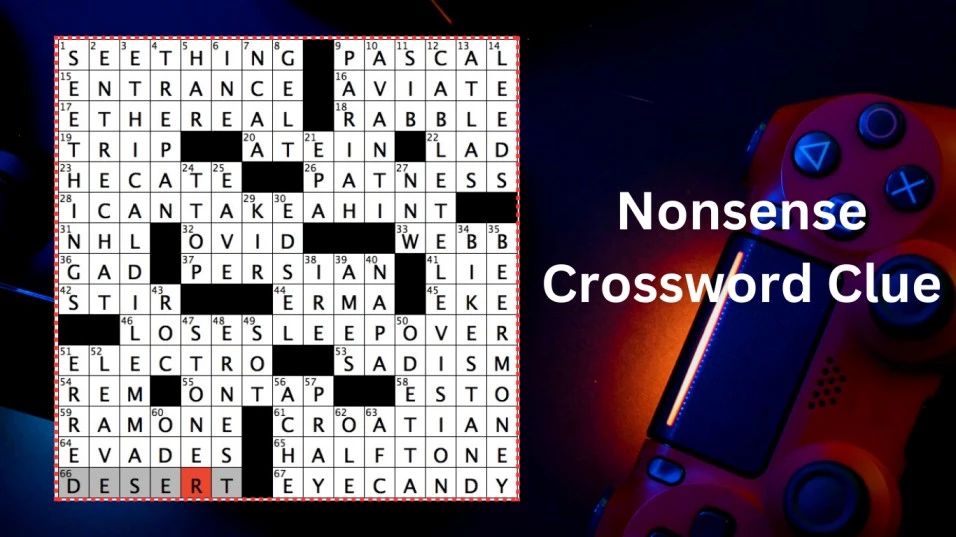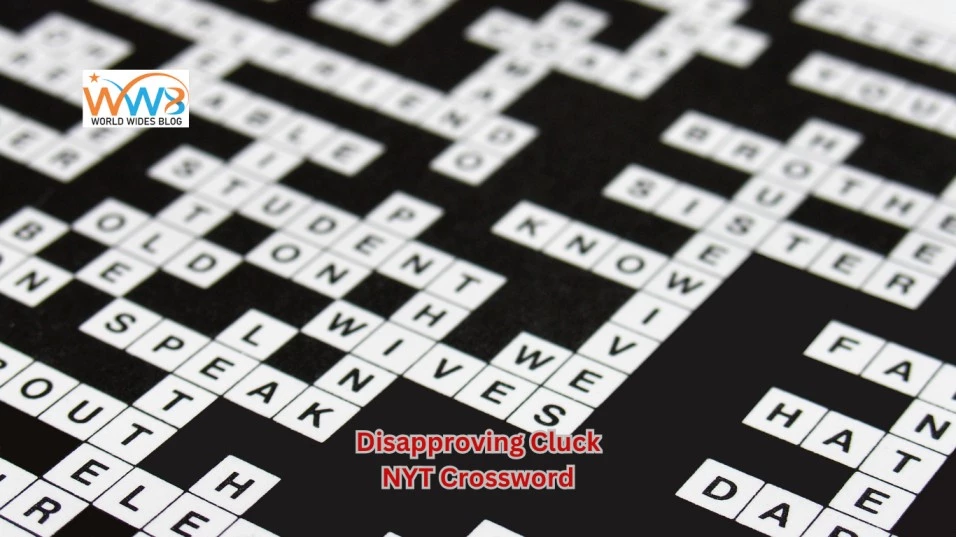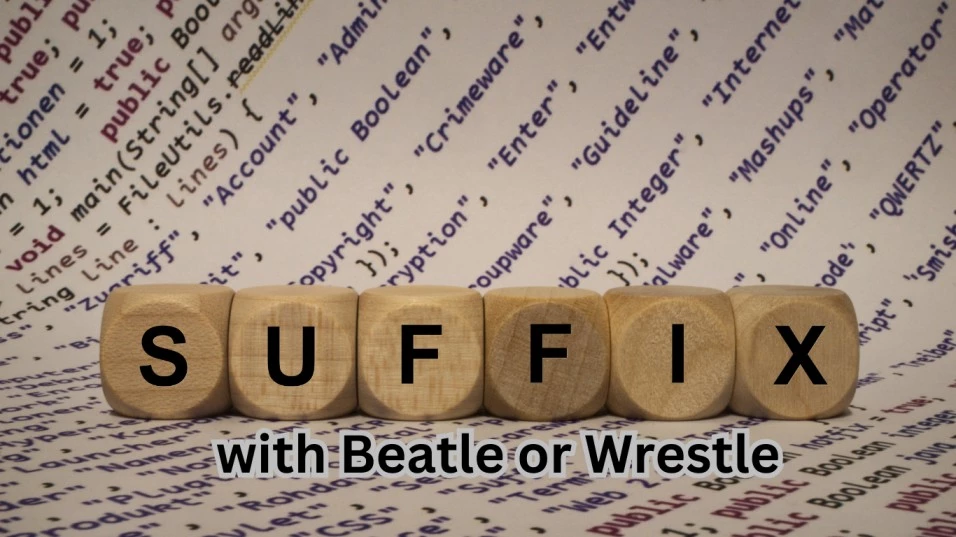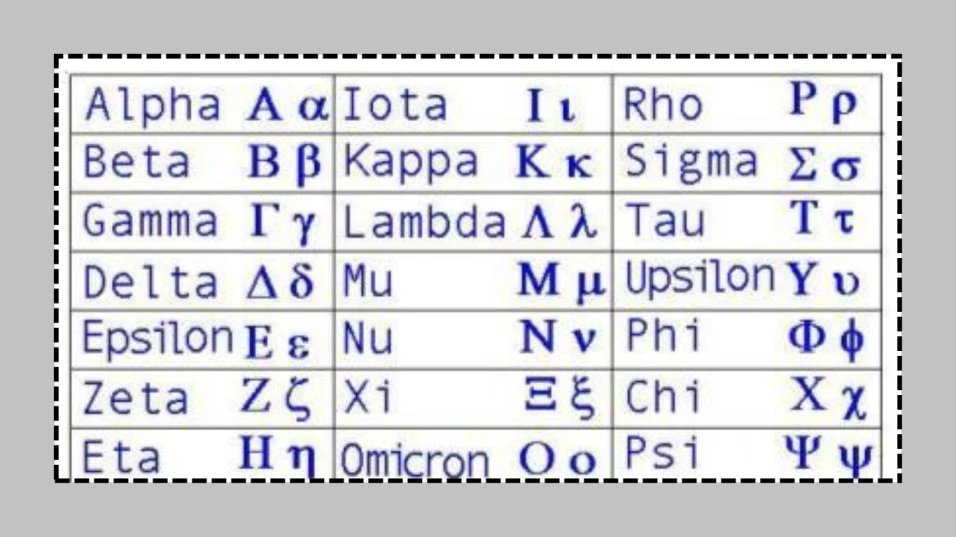Crossword puzzles have been a beloved pastime for decades, challenging our brains and entertaining us with clever wordplay. The clue is at the heart of every crossword—those little hints that guide us toward the solution. But what happens when a clue seems utterly baffling, nonsensical even? These so-called “nonsense” clues are a unique breed, adding a layer of complexity and humor to the puzzle-solving experience.
The Fascination with Crossword Puzzles
The Historical Background of Crosswords
The first crossword puzzle was published in 1913 by journalist Arthur Wynne. Since then, crosswords have become a global phenomenon, with daily puzzles appearing in newspapers, magazines, and online platforms. The appeal of crosswords lies in their blend of language skills, logic, and lateral thinking.
Crosswords in Modern Culture
Today, crosswords are more than just a hobby; they’re a cultural staple. Whether you’re solving the New York Times crossword or tackling a cryptic puzzle in a British paper, crosswords offer a mental workout that’s both challenging and rewarding.
The Appeal of Solving Puzzles
The joys of crossword solving are the satisfaction of filling in that last square, the “aha” moment when a tricky clue finally makes sense. Puzzles test our vocabulary, general knowledge, and problem-solving skills, making them a perfect blend of fun and education.
The Anatomy of a Crossword Puzzle
The Importance of Clues
Clues are the lifeblood of a crossword puzzle. They provide the necessary guidance to fill in the grid using word definitions, synonyms, and, sometimes, more complex forms of wordplay. The puzzle would be a blank grid devoid of meaning or purpose without clues.
Different Types of Clues
Crossword clues come in several forms:
- Straightforward Clues: These provide direct definitions or synonyms for the answer. For example, “Feline” might indicate “Cat.”
- Cryptic Clues are more complex and often involve wordplay, anagrams, or double meanings. An example might be “Mother’s back problem” for “Ma + issue,” leading to “Mausoleum.”
- Homophone Clues: These clues rely on words that sound alike but have different meanings or spellings. For instance, “Sounds like a tree” could clue “Fir” (for “fur”).
- Anagram Clues involve rearranging the letters in a clue to form the answer. For example, “Listen (7)” could lead to “Silent,” an anagram of “Listen.”
- Double Definitions: These clues offer two different definitions for the same word. For instance, “Lead (5)” could clue “Guide,” which means both lead and a substance.
These are just a few examples, but they cover the most common types you’ll encounter in crosswords.
Cryptic Clues vs. Straightforward Clues
Straightforward Clues are direct and typically involve simple definitions or synonyms, making them easier to solve. For example, “Large bird” might indicate “Eagle.”
Cryptic Clues are more complex and involve wordplay, such as anagrams, puns, or double meanings. They often require solvers to think laterally. For example, “Small rodent hides in a maze” could be a clue to “Mice,” where “hides” indicates the rodent is hidden within another word.
Cryptic clues make the solver find the hidden meaning. Straightforward clues show the answer directly.
What Constitutes a Nonsense Clue?
Defining “Nonsense” in the Context of Crosswords
A Nonsense Crossword Clue might initially defy logic or reason, leading solvers to scratch their heads in confusion. However, Nonsense Crossword clues are not nonsensical; they mislead the solver with wordplay, puns, and linguistic tricks. The challenge lies in seeing through the “nonsense” to find the real solution.
Examples of Nonsense Clues
Here are a few examples of nonsense clues:
- “Sounds like a bunch of owls (3)”: The answer is “Who,” playing on the sound an owl makes.
- “A funny fish? (5)”: The answer is “Clown.” This is like the word “clownfish.” The word “funny” hints at the word “clown.”
- “Leaves on a train? (5)”: The answer is “Pages,” like the pages of a book. “Train” means a train of thought or a process.
These clues seem absurd initially but reveal logical answers through clever wordplay.
How to Recognize a Nonsense Clue
Recognizing nonsense clues often involves paying attention to the structure of the clue and looking for signs of wordplay, such as puns, homophones, or anagrams. If a clue seems off or overly whimsical, it might be a nonsense clue waiting to be deciphered.
How to Solve a Nonsense Crossword Clue
Tips and Tricks for Deciphering Nonsense Clues
- Break Down the Clue: Analyze each part of the clue separately to understand its elements.
- Identify Wordplay: Look for puns, homophones, or hidden meanings that might be at play.
- Consider Alternate Interpretations: Think outside the box and explore unconventional meanings.
- Read the Clue Aloud: Sometimes, hearing the clue can help spot hidden patterns or sounds.
- Recognize Common Patterns: Familiarize yourself with typical Nonsense Crossword Clue structures to better anticipate their solutions.
Common Patterns in Nonsense Clues
- Homophones are words that sound the same. They have different meanings. For example, “Sounds like a bird” for “Pigeon” (which sounds like “Pigeon” and “Pigeon” as in a person who is easily fooled).
- Puns are the playful use of words to create humor or confusion. An example is “a wise bird” for “Owl” (a pun on the term “wise old owl”).
- Anagrams are clues that require rearranging letters to find the answer. For example, ‘Evil rats’ can be rearranged to spell ‘Strive.
- Double Meanings are clues that play on multiple interpretations of a word. For example, “A lot of noise” could refer to “Clamor” or “Racket.”
These patterns are often used to make tricky or fun clues. Solving them needs creative thinking.
The Role of Wordplay and Puns
Wordplay is at the heart of most nonsense clues. Puns, in particular, are a favorite puzzle-creator tool, adding humor and challenge to problem-solving. Understanding how puns work can significantly improve your ability to crack these tricky clues.
Why Do Puzzle Creators Use Nonsense Clues?
The Challenge Factor
Nonsense crossword clues make the puzzle harder. They add extra difficulty, so you must think more creatively and differently. For many, the challenge is part of the fun, making the eventual solution even more satisfying.
Adding Humor and Wit
Beyond the challenge, nonsense clues add a touch of humor and wit to a crossword puzzle. These clues often incorporate jokes, puns, or playful language, making the solving experience more enjoyable and engaging.
Engaging the Solver’s Creativity
Nonsense clues also engage the solver’s creativity, pushing them to consider alternative meanings and interpretations. This creative thinking is rewarding and helps keep the puzzle-solving process fresh and exciting.
The Impact of Nonsense Clues on Puzzle Solvers
Enhancing Problem-Solving Skills
Solving Nonsensical Crossword Clues requires a combination of logic, language skills, and creative thinking. This process can improve problem-solving skills and help people learn to look at problems differently.
Encouraging Lateral Thinking
Lateral thinking means thinking in new and creative ways. It is very important for solving tricky clues. These clues foster a more flexible and innovative mindset by challenging the solver to see beyond the obvious.
The Satisfaction of Solving a Tricky Clue
Solving a particularly tricky nonsense clue brings exceptional satisfaction. The “aha” moment, when everything clicks into place, is a reward, making the effort well worth it.
Famous Examples of Nonsense Crossword Clues
Historical Nonsense Clues
Some of the earliest crossword puzzles included clues that might be considered nonsense today. These clues often relied on wordplay and obscure references, challenging solvers in frustrating and fun ways.
Modern Nonsense Crossword Clue
Modern crossword puzzles continue to feature nonsense clues, though they are often more sophisticated and varied. Today’s puzzles might use pop culture references, advanced wordplay, or even internet slang to create nonsense clues that resonate with contemporary solvers.
How These Clues Have Evolved
In crossword puzzles, a “nonsense” clue often refers to a word or phrase that means something absurd, silly, or meaningless. Here are a few examples of common Nonsense Crossword Clue and their answers related to “nonsense”:
- Balderdash – Nonsense
- Hogwash – Nonsense
- Jabberwocky – Nonsense
- Gibberish – Nonsense
If you have a specific crossword clue you need help with, please share it.
Common Misconceptions About Nonsense Clues
Misinterpreting the Clue as a Mistake
Misinterpreting a clue in a crossword puzzle as a mistake can happen quickly, especially with tricky or ambiguous clues. Here’s a brief look at how this occurs and why it’s important:
Reasons for Misinterpretation
- Ambiguity: Clues can be intentionally vague or have multiple meanings.
- Wordplay: Puns or cryptic clues can confuse solvers.
- Cultural References: Unfamiliar references might lead to incorrect assumptions.
- Complexity: Some clues require thinking outside the box, which can be challenging.
Why It’s Important
- Learning Opportunity: Misinterpretations can help solvers learn and improve.
- Puzzle Enjoyment: Understanding and resolving tricky clues adds to the fun and satisfaction.
- Skill Development: Here’s a simpler version: “Helps you think critically and solve problems.
Misinterpreting clues is a standard part of solving crosswords, and recognizing this can make the experience more enjoyable and educational.
Believing the Clue Has No Solution
Another misconception is that nonsense clues have no solution, leading solvers to give up too quickly. Every nonsense clue has a logical answer, even if it’s not immediately apparent.
The Difference Between Nonsense and Misleading Clues
Nonsense Clues
- Definition: Clues that refer to something absurd or meaningless.
- Example: “Jabberwocky” means nonsense language.
- Purpose: Often meant to be humorous or whimsical.
Misleading Clues
- Definition: Clues designed to deceive or misdirect the solver.
- Example: “Lead” as a clue for “CLUE” (metal or hint).
- Purpose: To challenge the solver by using wordplay or ambiguity.
Key Differences
- Intention: Nonsense clues are silly. Misleading clues are tricky.
- Solving: Nonsense clues require recognizing absurdity; misleading clues require careful thinking and interpretation.
Creating Your Nonsense Crossword Clue
The Art of Crafting Nonsense Clues
Creating nonsense clues is both an art and a science. It requires a deep understanding of language, a playful sense of humor, and the ability to mislead solvers while pointing them toward the correct answer.
Balancing Nonsense with Solvability
The key to a good nonsense clue is balance. It should be challenging enough to stump solvers initially but not so obscure that it becomes unsolvable. Finding this balance is important for making a fun puzzle.
Testing Your Clues with Others
Before publishing a crossword puzzle, testing your nonsense clues with others is essential. This can help you gauge whether the clues are too complicated, too easy, or just right. Feedback from test solvers can be invaluable in refining your puzzle.
The Future of Nonsense Clues in Crossword Puzzles
The Evolution of Puzzle Design
Early Puzzles
- Simple Designs: Basic and straightforward.
- Common Types: Riddles, jigsaw puzzles, and mazes.
20th Century
- Crossword Puzzles: Introduction of crosswords in newspapers.
- Sudoku: Number-based puzzles gained popularity.
Modern Era
- Digital Puzzles: Online and app-based puzzles.
- Interactive Puzzles: Virtual reality and augmented reality puzzles.
- Complex Themes: Integration of stories, themes, and multimedia.
Benefits of Evolved Puzzles
- Engaging: More variety and complexity keep solvers interested.
- Educational: Enhances problem-solving and critical thinking skills.
- Accessible: Available on various platforms, reaching a wider audience.
The Influence of Technology on Clue Creation
Here’s a brief overview of how technology has influenced clue creation in puzzles:
Enhanced Tools
- Software: Puzzle creation software helps in designing complex and well-structured clues.
- Databases: Large databases allow creators to access vast word lists and references.
Online Collaboration
- Forums and Communities: Puzzle creators can share ideas and collaborate online.
- Crowdsourcing: Input from solvers worldwide can improve clue quality and variety.
Digital Puzzles
- Interactivity: Clues can include multimedia elements like images, sounds, and animations.
- Dynamic Clues: Technology allows for clues that change based on the solver’s actions or time.
Benefits
- Innovation: Technology brings new types of clues and puzzle formats.
- Accessibility: Digital platforms make puzzles more accessible to a global audience.
- Engagement: Interactive and multimedia clues enhance solver engagement and enjoyment.
The Enduring Appeal of the Nonsense Clue
Despite all the changes in puzzle design, the nonsense clue remains as popular as ever. Its ability to challenge, amuse, and engage solvers ensures that it will continue to be a beloved feature of crossword puzzles for years.
Final Thoughts
Nonsense crossword clue are more than just confusing hints; they are a testament to the creativity and wit of puzzle creators. By embracing the challenge of Nonsense Crossword Clues, solvers can enhance their problem-solving skills, engage in lateral thinking, and experience the joy of cracking a particularly tricky puzzle. So next time you encounter a clue that seems like pure nonsense, take a closer look—you might just find that the solution is right there, hidden in plain sight.
FAQs
1. What is a nonsense crossword clue?
- A nonsense crossword clue is a type of clue that uses wordplay, puns, or other linguistic tricks to mislead the solver. While it might seem illogical initially, the clue always has a solution that can be found with creative thinking.
2. Are nonsense clues meant to be unsolvable?
- No-nonsense clues are designed to be challenging but solvable. They require solvers to think outside the box and use lateral thinking to find the correct answer.
3. How can I get better at solving nonsense clues?
- Practice is vital to improving your skills with nonsense clues. Familiarize yourself with expected patterns, such as puns and homophones, and approach each clue with an open and creative mindset.
4. Do all crossword puzzles include nonsense clues?
- Not all crossword puzzles include nonsense clues, but they are common in many puzzles, especially those designed for more experienced solvers.
5. What should I do if I need help solving a nonsense clue?
- If you’re stuck on a nonsense clue, break it into smaller parts or consider alternative interpretations. Sometimes, stepping away and returning to the clue later can help you see it in a new light.




